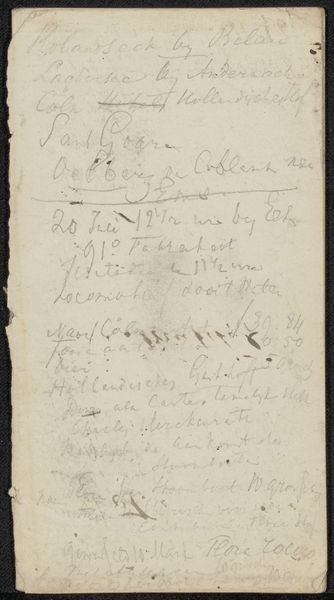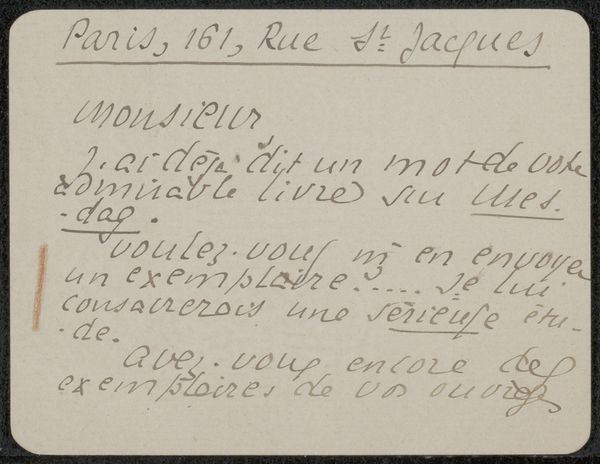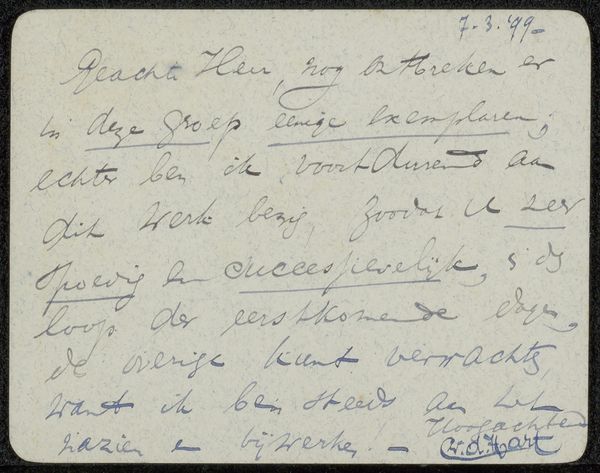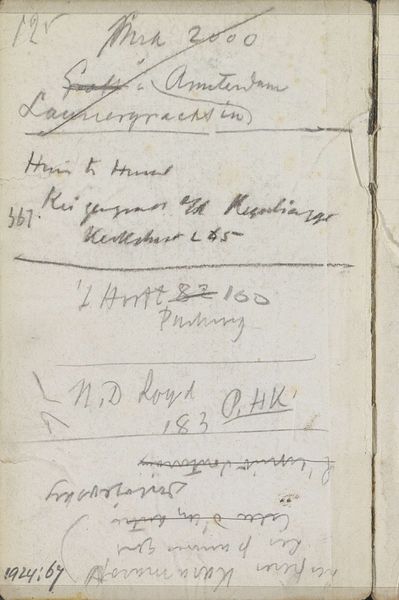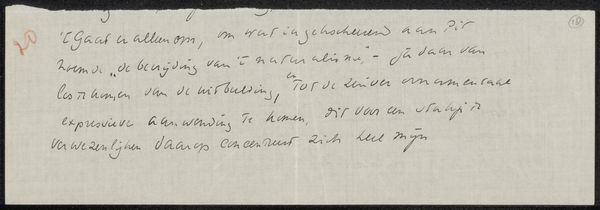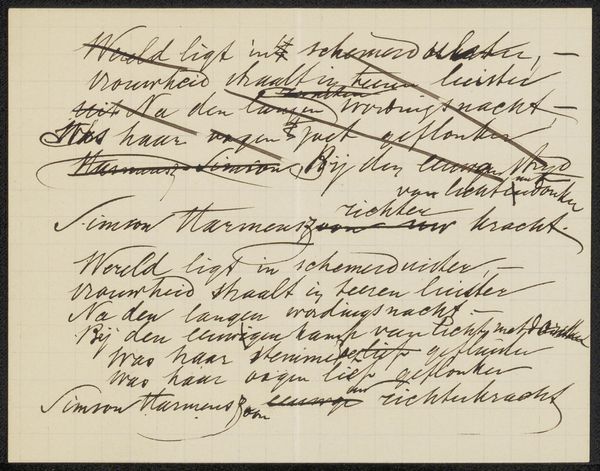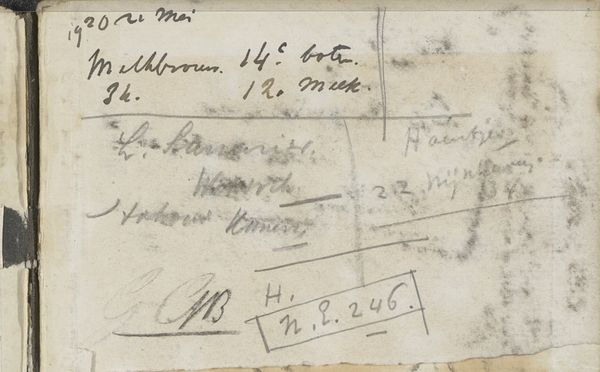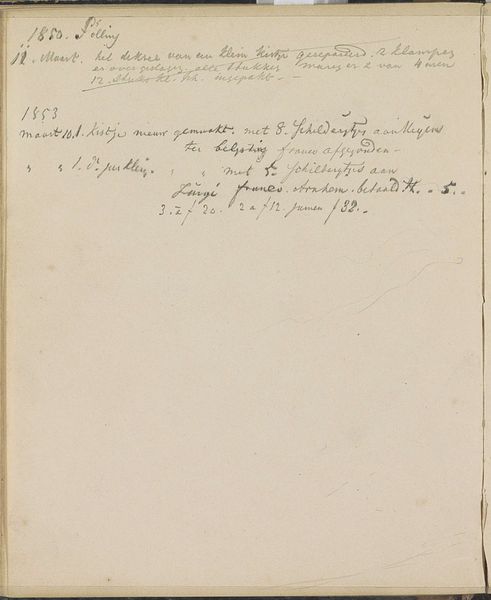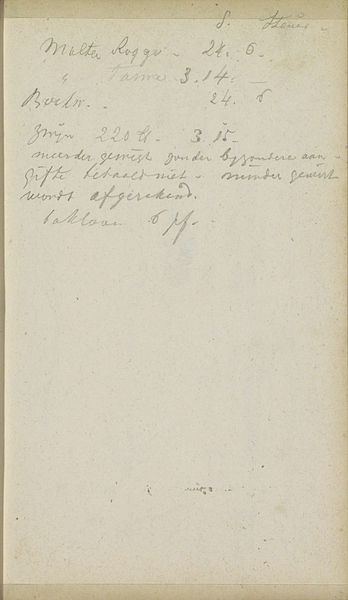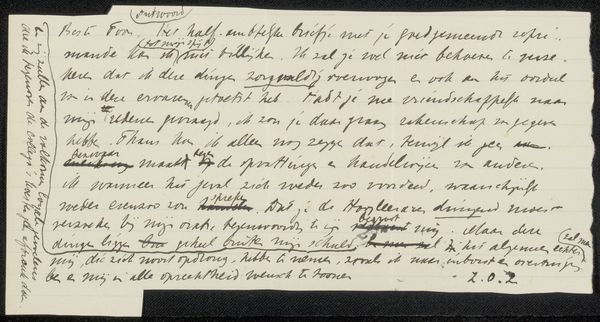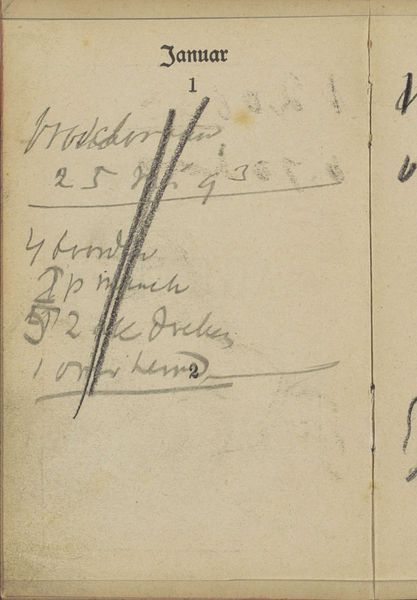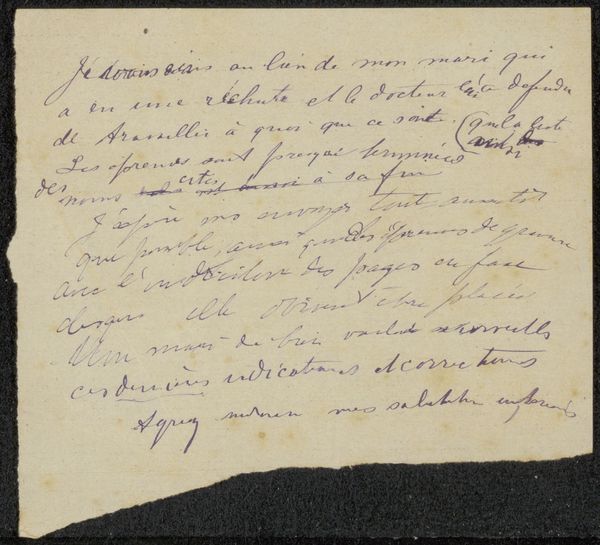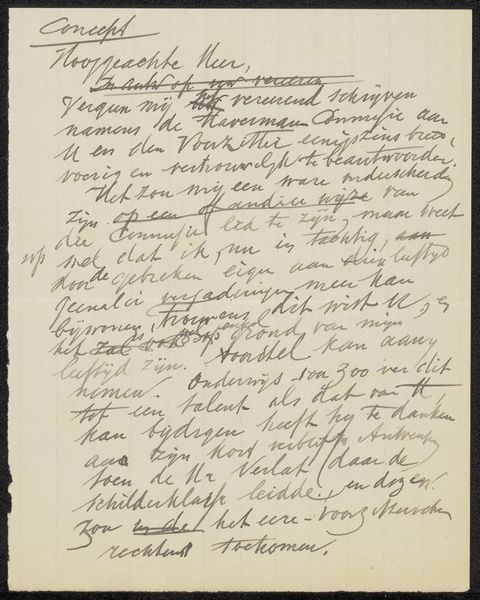
drawing, textile, paper, ink, pencil
#
drawing
#
textile
#
paper
#
personal sketchbook
#
ink
#
hand-written
#
intimism
#
pencil
#
calligraphy
Copyright: Rijks Museum: Open Domain
Curator: This intriguing piece is titled "Aantekening uit collectie August Allebé," dating from 1848 to 1927 and it's currently held at the Rijksmuseum. Allebé employed drawing, textile, paper, and ink to create it. Editor: It strikes me immediately as an intensely personal, almost secretive document. The handwritten text, densely packed, gives off an aura of intimacy, as if we're intruding on the artist's private thoughts. Curator: Absolutely. Notice the formal elements at play here: the delicate lines of the pencil, offset by the sharper, definitive strokes of ink. The use of paper as a ground and textile as a binding speaks to a provisional but persistent quality, hinting at process and iterative refinement. Editor: I agree with this persistence. The sketch appears to be an annotation, which points to the artist working from, and reflecting on, other artworks—specifically referencing size and possibly the sitters in 17th century paintings. I am immediately struck by how little has changed for artists even across centuries: so many artists and artisans labor with problems like scale, sizing and sourcing. The scribbled measurements suggest practical concerns, a mind wrestling with dimensions and constraints. It humanizes Allebé, grounding him not as an abstract genius but a worker with material considerations. Curator: Precisely! The calligraphy itself borders on abstraction. One could argue that its semiotic value resides not in decipherable content but the overall graphic impact. Look at the recurring loops and flourishes, forming a kind of visual rhythm across the surface. It’s reminiscent of early experiments with automatism and Surrealist practices. Editor: However, let's not ignore that very visible writing. We can interpret the inclusion of handwritten text, and repeated mention of "regents" or "regenten" in a more material way, literally representing the cultural figures whom artists had to measure themselves against, both physically when designing pieces, or figuratively when measuring cultural cache. In a way, he captures that moment in his annotations by sizing them up, so to speak. The textile acts not just as support, but almost a swaddling blanket. The artist is, after all, recording his reaction to cultural power and inheritance. Curator: A compelling interpretation. Yet the emphasis on formal qualities allows us to transcend these historical specificities, engaging with the artwork as an autonomous object that generates meaning irrespective of its explicit content. Editor: While there’s value in observing it for aesthetic qualities, understanding art within its specific era enriches our understanding; this is something immediate to any artist’s choices about line, negative space, medium or calligraphy. These formal choices can support or rebel against a context and legacy.
Comments
No comments
Be the first to comment and join the conversation on the ultimate creative platform.
